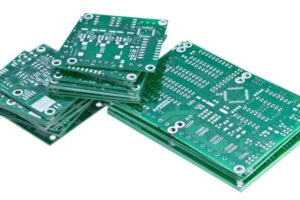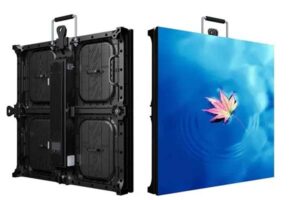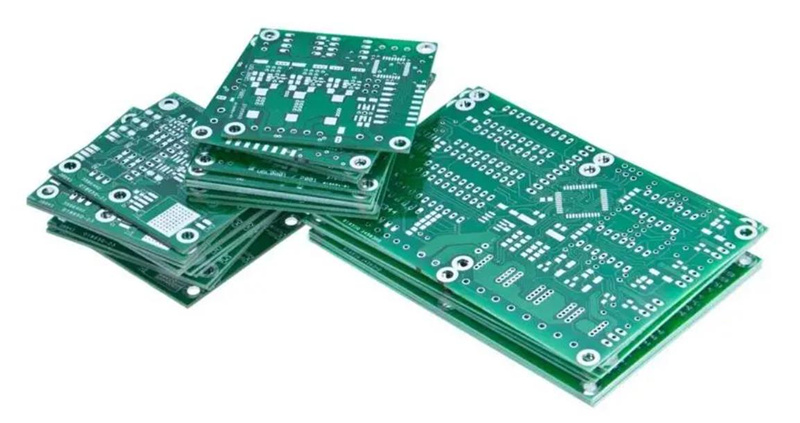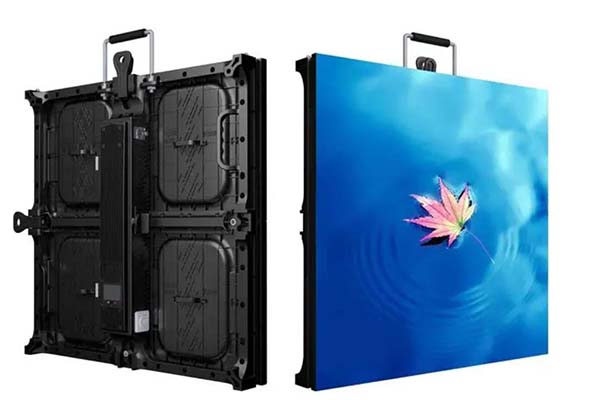1. How do you choose PCB materials?
PCB material selection involves balancing design needs, manufacturability, and cost. Consider electrical and mechanical aspects, especially for high-speed boards where dielectric constants and losses at specific frequencies are critical.
2. How can you avoid high-frequency interference?
To minimize interference, increase distance between high-speed and analog signals, employ ground guard traces, and manage noise between digital and analog grounds.
3. In high-speed design, how do you address signal integrity issues?
Signal integrity concerns are primarily about impedance matching, influenced by source architecture, trace characteristics, load, and topology. Solutions involve termination techniques and trace topology adjustments.
4. How is differential routing implemented?
Differential pair routing requires maintaining similar lengths and consistent spacing, often achieved by placing lines side-by-side or over-under on adjacent layers.
5. Can you implement differential routing for a single output clock signal?
No, differential routing requires both the signal source and receiver to be differential.
6. Should matching resistors be added between differential lines at the receiving end?
Yes, adding matching resistors, matching the differential impedance, can improve signal quality.
7. Why is it important for differential pair routing to be close and parallel?
Proximity and parallelism maintain consistent differential impedance, ensuring signal integrity and avoiding timing delays.
8. How do you resolve conflicts in practical routing?
Segregate analog and digital grounds, avoid crossing traces over divided ground regions, and prevent large return current paths for power and signals.
9. How do you address conflicts between manual and automated high-speed routing?
Differences in capabilities and constraints among automated routing engines affect routing styles, differential pair spacing, and ease of manual adjustments. Choosing a robust routing engine aligns with designer expectations.
10. What is the purpose of test coupons in PCB design?
Test coupons help measure PCB impedance characteristics using TDR to ensure they meet design specifications. Proper positioning and proximity of measurement points and ground leads are crucial for accurate measurements.
11. How should copper be distributed on multiple signal layers for grounding and power connections in high-speed PCB design?
Generally, the majority of copper on blank areas is used for grounding. However, when applying copper near high-speed signal lines, it’s important to consider the distance from the signal line as the added copper may slightly affect the trace’s characteristic impedance. Additionally, caution should be taken not to interfere with the impedance of other layers, especially in dual strip line structures.
12. Can the microstrip line model be used to calculate characteristic impedance for signal lines on the power plane? Can the strip line model be used for signals between power and ground planes?
Yes, when calculating characteristic impedance, both the power and ground planes must be considered as reference planes. For instance, in a four-layer board: top layer-power plane-ground plane-bottom layer, the model for the characteristic impedance of the top layer traces considers the power plane as a reference using the microstrip line model.
13. Can software-generated test points on high-density PCBs meet mass production testing requirements?
The ability of software-generated test points to meet testing requirements depends on whether the specified test point standards align with the testing equipment. If the routing is too dense and the test point specifications are stringent, it might not be possible to automatically add test points to every segment. Manual additions might be necessary for specific test locations.
14. Does adding test points affect the quality of high-speed signals?
The impact on signal quality due to added test points varies based on the method of addition and the speed of the signal. External test points (not utilizing existing vias or DIP pins) might add a small capacitance to the line or create an additional branch. Both scenarios can affect high-speed signals to some extent, depending on the signal frequency, speed, and edge rate. Simulations can assess the extent of this impact.
15. How should the ground lines between multiple PCBs in a system be connected?
When signals or power move between interconnected PCBs, the current from the ground layer in one board will return to that board due to Kirchoff’s current law. This current will seek paths with lower impedance. Hence, adequate ground pins should be allocated at each interface to lower impedance, reducing noise on the ground layer. Analyzing the entire current loop, especially areas with higher currents, allows adjustments to control the current path, minimizing its impact on sensitive signals.
16. Can you recommend some foreign technical books and resources on high-speed PCB design?
High-speed digital circuits find applications in communication networks and computing devices. PCBs in communication networks operate in the GHz range, sometimes reaching up to 40 layers. Computing applications, including PCs and servers, have seen board frequencies surpass 400MHz (such as Rambus). Like these top China PCB Manufacturers can meet these high-speed and high-density wiring demands, often incorporating blind/buried vias, microvias, and build-up processes.
17. Mention two commonly referenced formulas for characteristic impedance:
Microstrip line: Z={87/[sqrt(Er+1.41)]}ln[5.98H/(0.8W+T)] where W is the trace width, T is the copper thickness, H is the distance to the reference plane, and Er is the dielectric constant. This formula applies when 0.1《(W/H)《2.0 and 1《(Er)《15.
Stripline: Z=[60/sqrt(Er)]ln{4H/[0.67π(T+0.8W)]} where H is the distance between two reference planes, and the trace lies between them. This formula applies when W/H《0.35 and T/H《0.25.
18. Can a ground line be added between differential signal lines?
Generally, a ground line should not be added between differential signal lines as the principle of differential signaling relies on beneficial coupling effects like flux cancellation and noise immunity, which could be disrupted by adding a ground line in between.
19. Are there specialized design software and specifications needed for rigid-flex board design? Where in China can one find manufacturers capable of producing such boards?
General PCB design software can be used for designing flexible printed circuits (FPC). Manufacturers receive designs in Gerber format. Manufacturing processes for FPCs vary from standard PCBs, and each manufacturer might have specific requirements for trace width, spacing, and vias. Additionally, reinforcing copper can be added at flex circuit bending points. Manufacturers of these boards can be found by searching for “FPC” online.
20. What principles guide the appropriate selection of grounding points between a PCB and its casing?
Selecting grounding points between a PCB and its casing involves using the chassis ground to provide a low-impedance path for returning current and controlling its flow. For instance, near high-frequency devices or clock generators, connecting the PCB ground layer to the chassis ground with fixed screws minimizes the overall current loop area and reduces electromagnetic radiation.
21. What are the key aspects to consider during circuit board debugging?
For digital circuits, start by sequentially confirming three aspects: 1. Ensure all power values meet design requirements. Systems with multiple power sources might require specific sequencing or timing among these sources. 2. Verify that all clock signal frequencies work correctly without non-monotonic issues on signal edges. 3. Check if the reset signal meets specified requirements. If all these aspects check out, the chip should emit signals over a cycle. Proceed with debugging based on the system’s operational principles and bus protocols.
22. Techniques in high-speed, high-density PCB design (>100MHz):
In high-speed, high-density PCB design, crosstalk interference should be carefully managed. Techniques include controlling trace characteristic impedance, maintaining adequate trace spacing (often double the trace width), selecting appropriate termination methods, avoiding parallel traces on adjacent layers, utilizing blind/buried vias to increase trace area, and employing differential and common-mode terminations to mitigate timing and signal integrity issues.
23. Why might LC filtering sometimes be less effective than RC filtering?
The comparative effectiveness of LC and RC filtering depends on the noise frequency to be filtered and the selected inductance value. If the noise frequency is low, insufficient inductance might result in lesser filtering effectiveness compared to RC filters. However, RC filters inherently dissipate power through resistance, impacting efficiency and requiring careful selection based on power tolerance.
24. Methods for selecting inductance and capacitance values for filtering:
When choosing inductance values, besides considering the noise frequency, also contemplate the instantaneous response to current fluctuations. Excessive inductance might impede the flow of sudden current changes, potentially increasing ripple noise. Capacitance values relate to the permissible ripple noise; smaller noise requirements entail larger capacitance values. ESR/ESL of capacitors also play a role in selection, especially in switch-mode power supplies impacting negative feedback control circuit stability.
25. Strategies to achieve EMC requirements without excessive cost:
PCB costs increase due to EMC primarily because of added ground layers for improved shielding and incorporation of ferrite beads or chokes for high-frequency harmonic suppression. Additionally, system-level shielding structures often complement PCB measures. Design techniques to reduce electromagnetic radiation include selecting slower slew rate devices, careful placement of high-frequency devices away from connectors, impedance matching for high-speed signals, and proper grounding near connectors.
26. Why is it common to separate digital and analog grounds in PCBs with multiple analog/digital blocks?
Separating digital and analog grounds is aimed at minimizing noise from digital circuit switching on power and ground planes. Without separation, even if analog and digital signals don’t cross, analog signals near areas generating significant noise from digital circuits can still be affected by ground noise.
27. Reasoning behind a unified ground plane for separated analog/digital signals in a PCB:
When ensuring separation of analog and digital signals without dividing the ground plane, the logic is to prevent the return current path of faster digital signals from generating noise in the analog area. It’s essential to avoid crossing paths between digital and analog signals to prevent interference.
28. Considering impedance matching in high-speed PCB schematic design:
During high-speed PCB design, impedance matching is critical. Impedance values depend on trace layout, whether they are microstrip or stripline, distance from reference layers, trace width, PCB material, and more. Schematic designs can only tentatively plan for impedance mismatches by incorporating terminators like series resistors to mitigate the effects of inconsistent impedance. Ideally, avoiding impedance discontinuities during routing is the primary solution.
29. Where to find accurate IBIS model libraries?
IBIS model accuracy directly impacts simulation results. These models, representing the electrical characteristics of I/O buffers, are typically derived from SPICE models, influenced by chip manufacturing specifics. Each chip manufacturer has unique SPICE data, making their IBIS models specific to their chips. Therefore, manufacturers are best equipped to provide accurate IBIS models for their devices, as no one knows their manufacturing process better.
30. Considering EMI/EMC rules in high-speed PCB design:
EMI/EMC considerations cover both radiated and conducted emissions. Designers need to address high and low-frequency aspects for effective mitigation. Key factors include device placement, PCB layer arrangement, critical signal routing, device selection, and careful attention to signal slew rates, decoupling capacitor responses, and the return paths of high-frequency signals to minimize loop impedance and radiation. Proper grounding and isolation strategies near connectors and the careful selection of grounding points can further aid in meeting EMI/EMC requirements.






